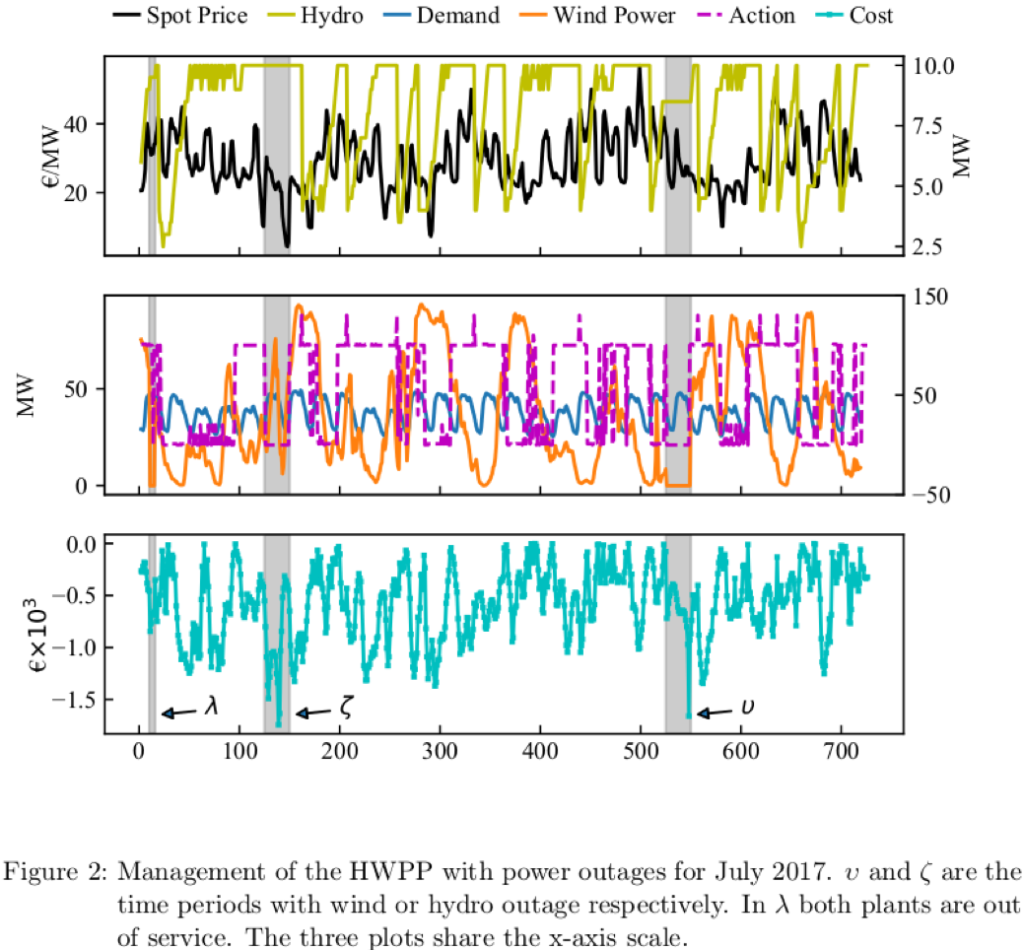Publication: Subsidies-Free Renewable Energy Trading: A Meta Agent Approach
Tags:
Figure 1 shows the hourly costs and control of the HWPP, the wholesale price, demand, wind power, and hydro usage. The agent learns a cost-effective charge/discharges of the hydro plant. It discharges the hydro plant when there is lack of wind power. The effect of the wait-and-see strategy can be seen in holding the hydro capacity and discharging when the spot price is disadvantageous. For example, the shaded areas highlight a discharge of the hydro plant to cover the lack of wind power. However, based on the predictions, waits until a peak price. Also, prevents wind spillage and curtailment by pumping water to the reservoir when the spot price is low or with surplus wind power (left most shaded area).

The robustness of MAL is tested with random outages of the hydro plant and/or the wind farm. As a consequence of lack of internal energy capacity, the results show an increase in the overall TPC as expected. However of more significance is the control of the hydro plant. In Fig. 2 is observed that the outages does not impact the management of the power flows by either dry running or overflowing the reservoirs. The shaded areas of the figure $\upsilon$ stands for wind power outage, $\zeta$ for a failure of the hydro plant and in $\lambda$ both plants are out of service. In the first outage event, both plants are out for a period of 5 hrs. Followed by the hydro plant for 24 hrs. Lastly, in the third event the wind plant is out of service for 24 hrs.
The MAL brings together energy and the stat-of-the-art in machine intelligence. The work facilitates the integration of renewables reducing the gap of self-sustainment and support-free markets. A direct impact could be realized in lower energy tariffs to electricity customers and a seamless increase of the renewable quota.
Authors: Genaro Longoria, Alan Davy and Lei Shi.
Journal: IEEE Transactions on Sustainable Energy
Link: https://ieeexplore.ieee.org/document/8818651/]]>




